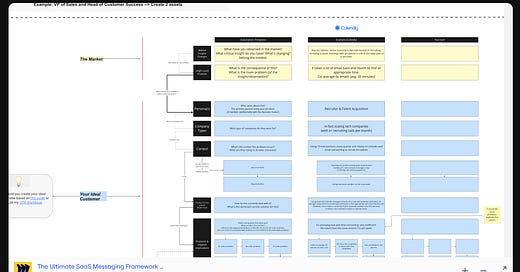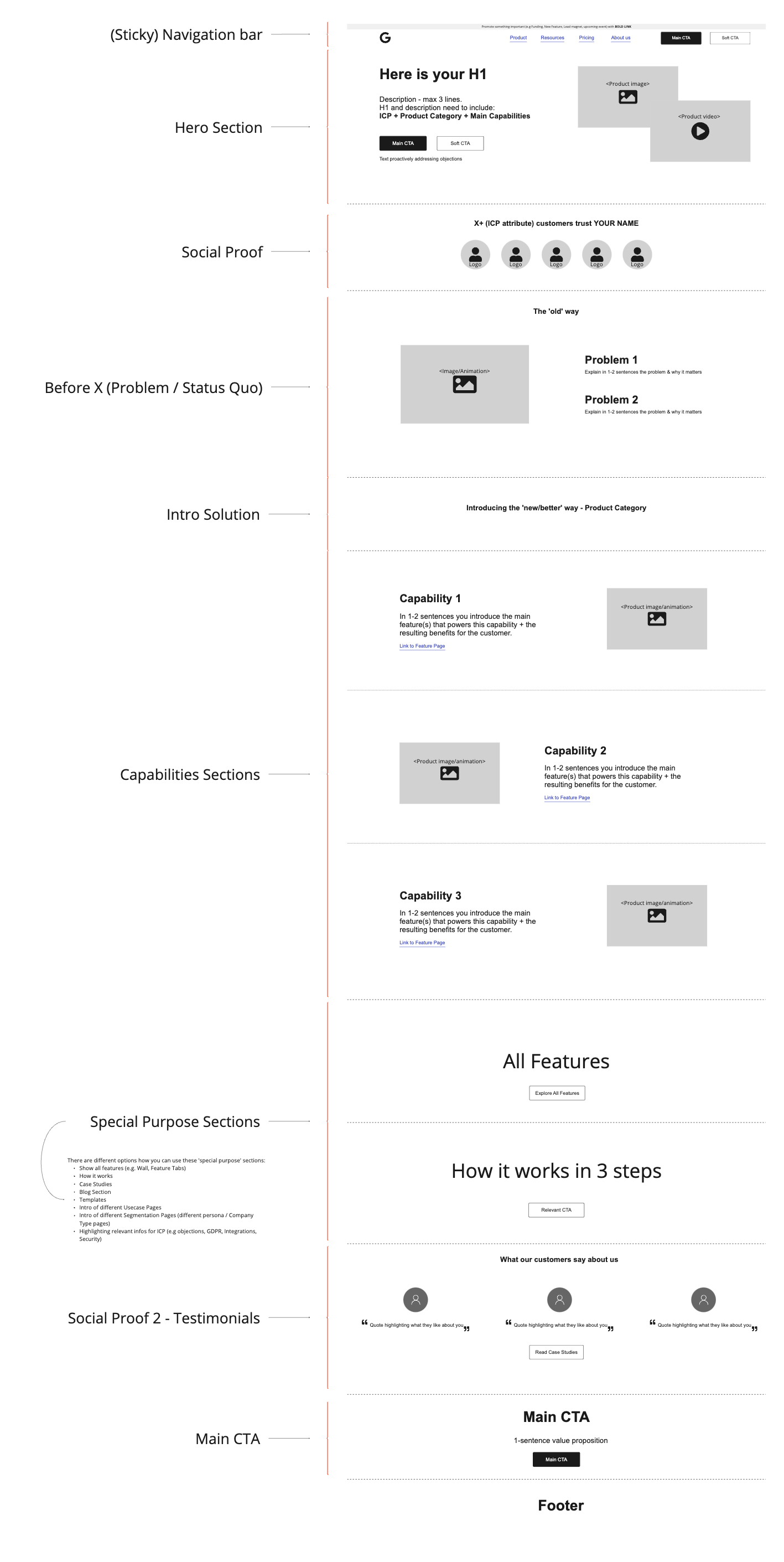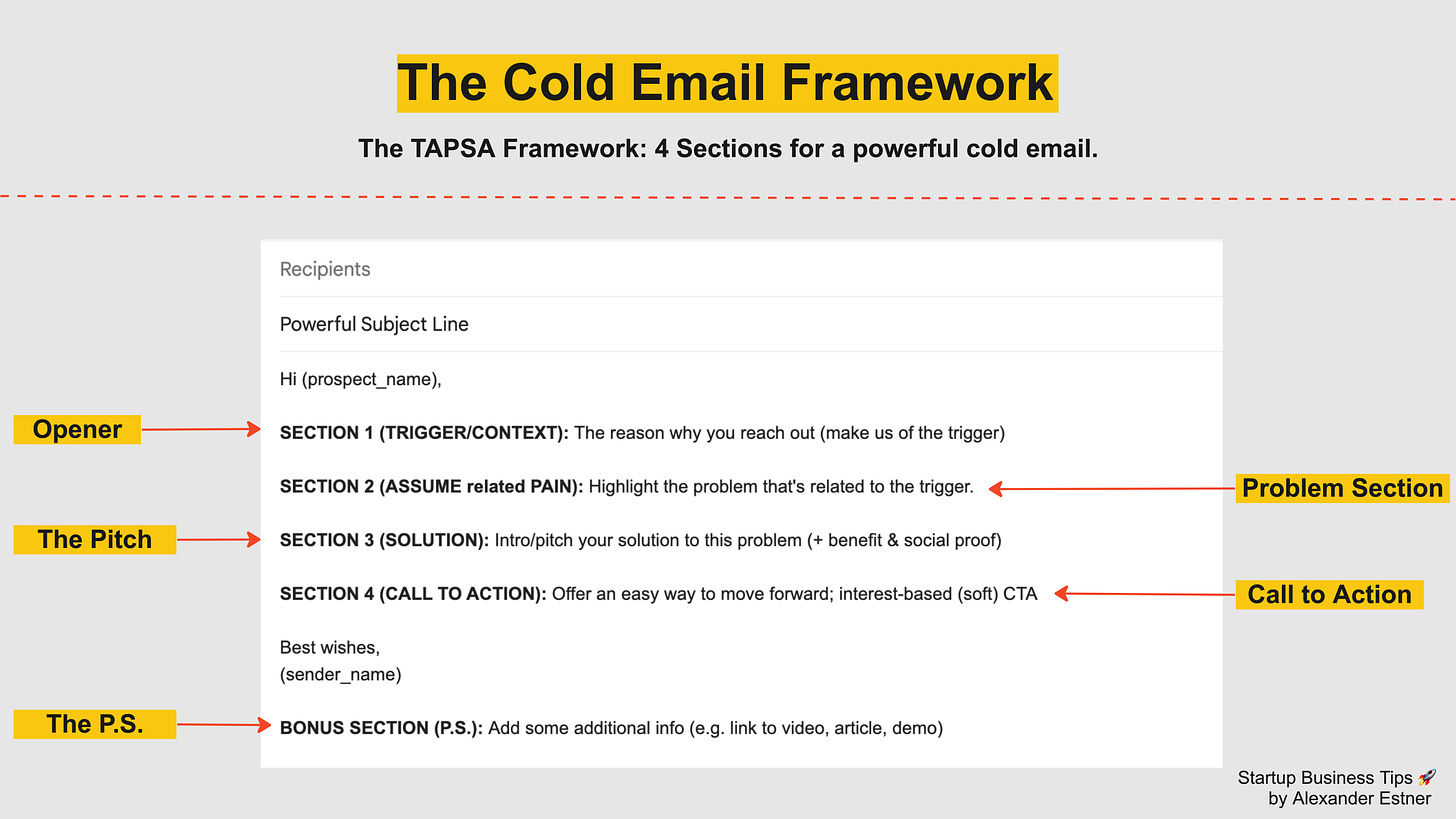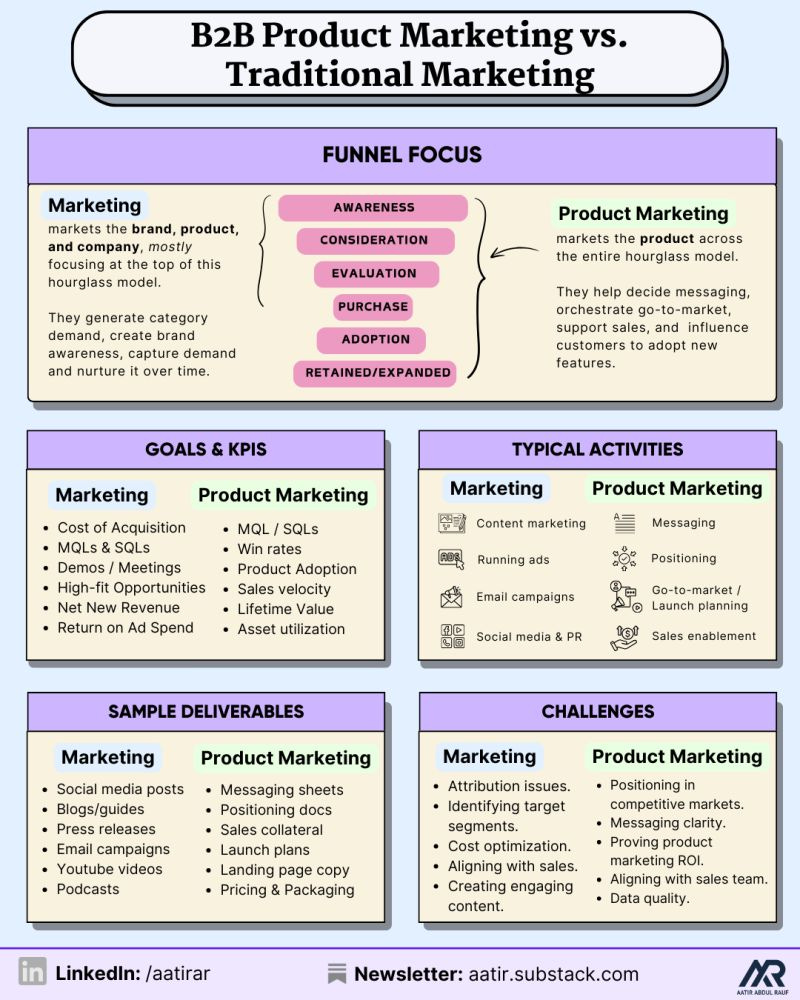Turn your SaaS messaging into powerful sales & marketing assets
Self-reported attribution & Product Marketing vs. Traditional Marketing
Hey - it’s Alex!
Today we cover:
1️⃣ What to do with your SaaS messaging framework
2️⃣ Growth Tactic: Self-reported attribution
3️⃣ Bonus material: Product Marketing vs. Traditional Marketing
In case you missed the last 3 episodes:
✅ Analyze your SaaS Funnel to identify the problems
✅ The right time to scale your SaaS
✅ 12 LinkedIn Post templates that drive qualified inbounds
If you’re new to the newsletter: I share with you bi-weekly 3 actionable growth tactics that will help you quickly grow your SaaS business from €0 to €1 million ARR 🚀.
A quick word from our sponsors
📢 Boopos - The #1 online platform to sell & buy businesses with financing available.
Unlock business opportunities with Boopos. Your marketplace for selling, and buying businesses. Get financing to acquire your next venture with expert advisor guidance.
📢 path digital - Your B2B SaaS website - but on steroids.
Overcome the limits of your current website and accelerate your growth with a Performance Design Website that not only looks good but also performs.
Want to reach 3000+ early-stage SaaS founders/leaders? Sponsor the next newsletter (booked out for the next 2 months).
1. How to make use of your SaaS Messaging Framework
Today we want to cover how you can turn your SaaS messaging framework into powerful sales & marketing assets (homepage, sales deck, cold emails, etc.)
The Ultimate SaaS Messaging Framework is used now by more than 300 SaaS companies.
It’s the foundation for all your customer-facing communication.
But I frequently get the question:
What should we do now with the Messaging framework???
In the beginning, I was surprised.
Because I thought it was clear.
My answer was always something along the way:
It’s the foundation for all your customer-facing communication ‘assets’. Build your website, sales deck, emails, etc….
Your messaging is the foundation to build your key assets like:
your homepage
your sales deck
your email sequences
your product onboardings
your product demos
and much more…
The ultimate goal is that it makes your GTM more efficient and consistent.
So you don’t need to start at zero every time you:
write an email,
build a new landing page,
or pitch your product
You will use a consistent narrative.
So let’s cover the steps you can do once you have your Messaging Framework.
Step 1: Sales Narrative
I like to turn the messaging framework into a short version.
It’s your sales story / POV (point of view).
It’s your sales narrative. The way you look at the market.
Step 2: Your Value Proposition
Everyone in your company needs to know this.
We covered it in our previous newsletter.
You can turn the value proposition canvas into 3 sentences.
It’s your elevator pitch.
Step 3: Elevator Pitch
With these core messaging assets in place, you’re well-equipped for your GTM work.
Step 4: Translate into Homepage
Each element of your messaging finds its place on your homepage.
Your homepage is the visual part of your sales story.
Here’s my Free Homepage template.
Step 5: Translate into Sales Deck
Another crucial marketing/sales asset is your sales deck.
Again each part of the messaging framework finds its place.
Step 6: Objection Handling
We all face it. Objections.
Part of the messaging framework is to collect your most common objections.
You need to handle them.
In your:
sales deck (FAQ)
on your website (FAQ section)
in your sales demos
To be prepared for this, use my objection handling template.
Step 7: Demos, Multi-Channel Prospecting & Content Marketing
The list goes on. Because messaging is everywhere.
The point is. Each of these assets relies on a solid messaging framework.
Includes the status quo, competitive alternatives, problem, jobs to be done, desired outcome, benefits, objections…
Includes market insights, assumed pains, 1-sentence value proposition…
Includes again the status quo, identified pain, solution (features, capabilities & benefits), but maybe also answers to objections and your positioning against competition.
You need to know what your ICP cares about (problem and status quo) to create content that resonates.
I hope this makes it clear why every SaaS company needs a solid messaging framework.
So in case you don’t have a messaging framework, get a copy of my free template.
2. Growth Tactic - Self-reported attribution “How did you hear about us?”
This growth tactic is one of the 132 growth tactics of the 90+ actionable SaaS growth tactics database that already helped 200+ SaaS leaders.
Marketing attribution has always been controversial as it's hard to measure correctly with so many touchpoints.
Especially with dark social, multi-device usage, and privacy regulations.
But it’s crucial to know what channels work to optimize your campaigns.
And also to double down and invest more €€€.
The solution?
Keep it simple!
Ask your customer.
It’s called self-reported attribution.
You ask them:
“How did you hear about us?”
Depending on your sales motion, the information can be collected in multiple ways:
1️⃣ Sign-up form / Book demo
2️⃣ Onboarding flow
3️⃣ On the sales call
You can combine these methods.
Make sure that you save this information in your CRM (custom field).
3. Bonus material - Best of this week 💪
👉 Product Marketing vs. Traditional Marketing
👉 The journey of Folk: 5x year over year growth
I’m curious, how do you use the messaging framework? Just reply! ✌️
Happy growth 🚀














